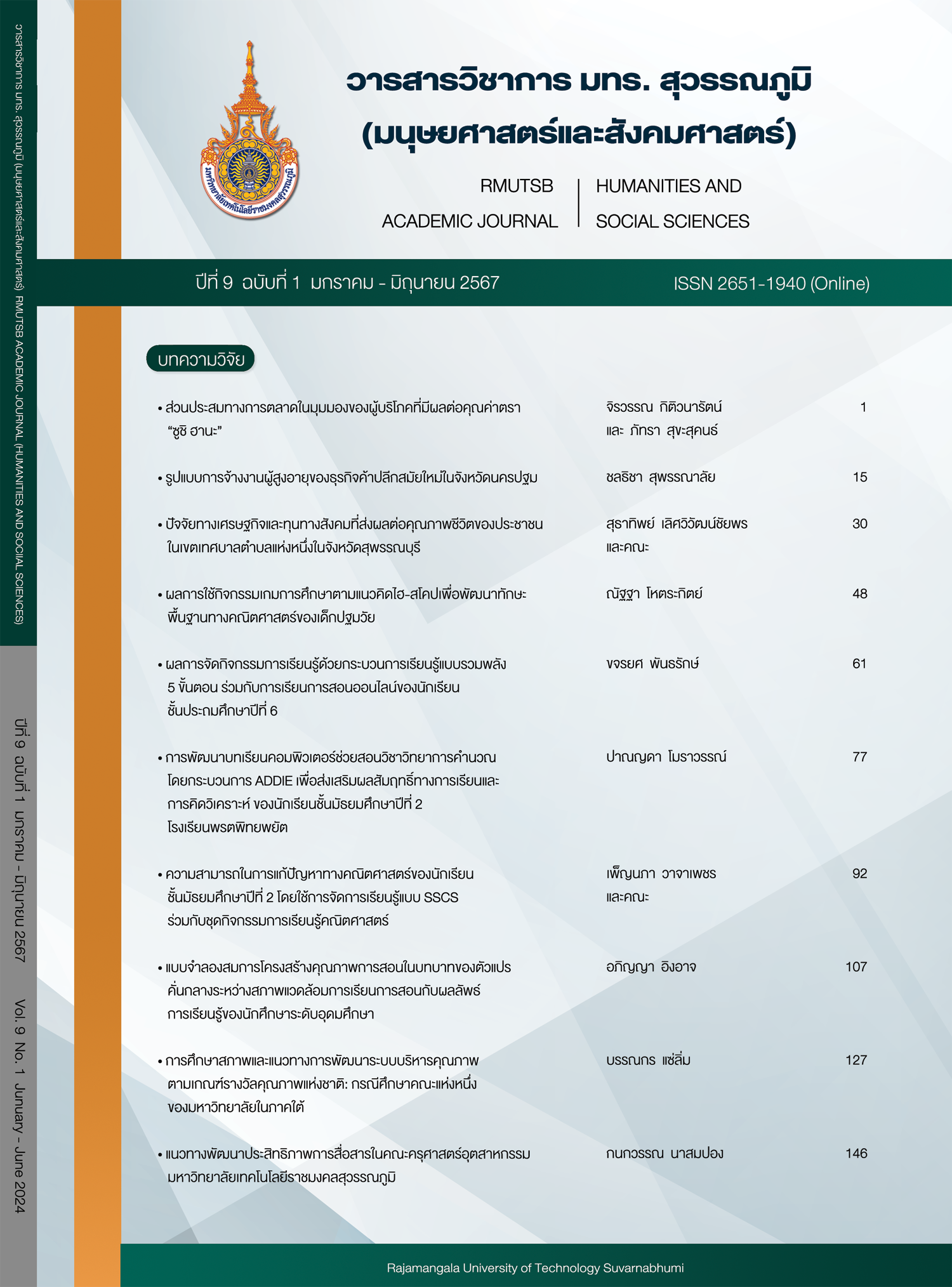Guidelines for developing communication efficiency in the Faculty of Industrial Education, Rajamangala University of Technology Suvarnabhumi
Main Article Content
Abstract
The purposes of this study were to investigate and develop guidelines to improve communication efficiency in the faculty of industrial education, Rajamangala University of Technology Suvarnabhumi. The sample group of key performance consisted of 72 participants from faculty administrators, lecturers, and support staffs. The sample size was taken from Krejcie, & Morgan concept at 95% confidence level by simple random sampling. Research instruments included questionnaires and in-depth interviews. Statistics implemented in data analysis were frequency, percentage, mean, and standard deviation.
The results showed that: 1) The overall score of the organization’s communication efficiency was at a high level and, 2) the guidelines to develop the organization’s communication efficiency included the following aspects; (1) The communications within the faculty should be focused on communicating policies in which relevant information will be informed and considered as operational guidelines, (2) the communication process within the faculty should be informative, interesting, quick, up-to-date, and complete.
Article Details

This work is licensed under a Creative Commons Attribution-NonCommercial-NoDerivatives 4.0 International License.
References
Amornratwitaya, N., & Atiwitthayaporn, J. (2021). The effectiveness of communication within the organization: A case study of Khunnatham Wittaya School, Hat Yai, Songkhla Province. The 12th Hatyai National and International Conference (pp. 1035-1048). Songkhla: Hatyai University. (in Thai)
Chaisutti, T. (2021). The relationship between communication behavior, communication satisfactions and effectiveness of internal communication among officials of the President Office, Burapha University (Master’s thesis). Burapha University, Chonburi. (in Thai)
Chamsuriya, T., & Chienwattanasook, K. (2019). Organization communication that affects participation in continual improvement activities (Kaizen) empirical evidence from Practika Co., Ltd. Journal of MCU Nakhondhat, 6(3), 1217-1231. (in Thai)
Ekakul, T. (2000). Research methods, behavioral and social sciences. Ubon Ratchathani: Ubon Ratchathani Rajabhat Institute. (in Thai)
Kritsanasopa, S., & Someraan, L. (2018). The factors affecting to the employees’ work efficiency of the Single Point Parts (Thailand) Public Company Limited. RMUTSB Academic Journal (Humanities and Social Sciences), 3(1), 55-66. (in Thai)
Krejcie, R. V., & Morgan, D. W. (1970). Determining sample size for research activities. Educational and Psychological Measurement, 30(3), 607-610.
Pinyo, N. (2019). Organizational communication factors affecting human resource management process of staff in Songkhla Provincial Administrative Organization (Master’s thesis). Prince of Songkla University, Songkla. (in Thai)
Pokang, P. (2011). Measures for development of effective organizational communication at Faculty of Agricultural Technology (research report). Pathum Thani: Rajamangala University of Technology Thanyaburi. (in Thai)
Robbin, S. P., & Judge, T.A. (2017). Organizational behavior (17thed.). Edinbergh Gate, Harlow, Essex: Pearson Education Limited.
Sapappong, O. (2020) Internal organization communication affecting the efficiency of academics’ performance of Southeast Asia University. Social Science Journal, 9(2), 119-127. (in Thai)
Srisa-ard, B. (2013). Preliminary research (9th ed.). Bangkok: Suveeriyasan. (in Thai)


